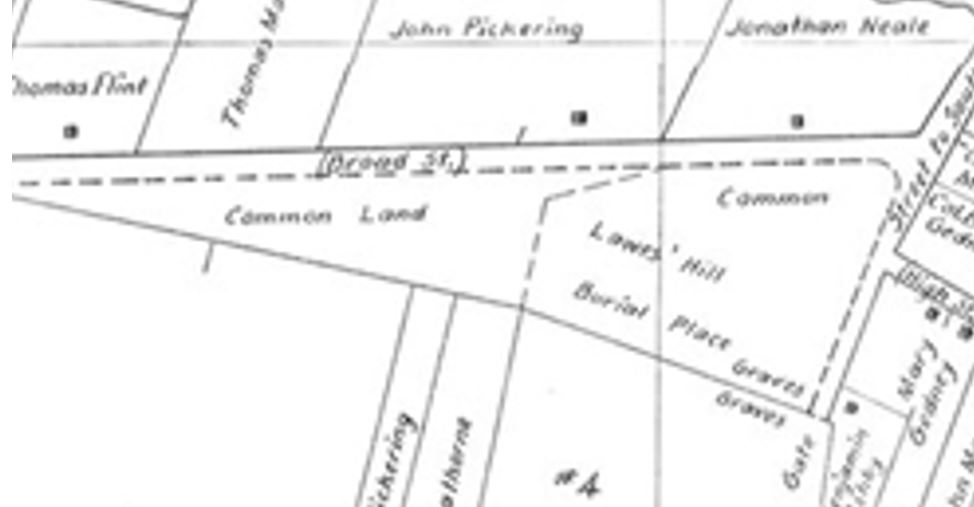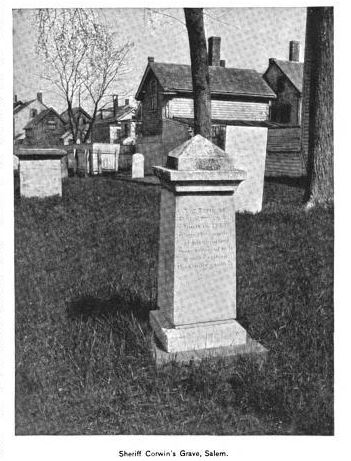Established in 1655, Broad Street Cemetery is the second oldest cemetery in Salem, Mass.
The cemetery is 2.69 acres in size with approximately 684 headstones. The oldest headstone is from 1684 and the latest headstone is from 1988.
The cemetery also has 85 tombs. The majority of these tombs are underground with only a marker to indicate they are there while others have above ground entrances with either slate, marble or iron doors.
The cemetery was established on May 17, 1655, when a town report disclosed an order that “there shall be a burial place on the hill above Francis Lawes’ house.”
The town chose the hill as the location for the cemetery because it was common land, even though it was often referred to as Lawes’ Hill due to its close proximity to Lawe’s house and property.
As a result, the cemetery was originally known as Lawes’ Hill Burial Place and later came to be known as Ye Old Common Burying Hill. The cemetery was unfenced at the time but had a red gate at the eastern corner of the property.
At the time the cemetery was established, the eastern edge of the property was lined with a road leading to a nearby field known as Broadfield.
The oldest section of the cemetery is the southeastern portion. The oldest existing headstone was placed in the cemetery in 1684 when Major Stephen Sewall’s four-month-old son, Stephen, died on December 22.
In 1716, the town began construction on an almshouse in the northeast corner of the common land. The almshouse was finally completed in the winter of 1718-19.
In 1732, a wooden fence was built around the cemetery.
In 1749, the town enlarged the almshouse by adding a wing to the west end and enlarged it again in 1768 with a wing on the east end.
A row of tombs was constructed along Broad Street in 1802 by stonemasons John Dodge, John Stimpson and Hooper Stimpson.
When a new almshouse was built on Salem neck in 1816, the almshouse on Broad Street was sold at auction for materials.
In 1856, the wooden fence around the cemetery was replaced by an iron fence and various shrubs and trees were planted. Cast iron plaques were placed on the eastern end of the fence that identified the names on the nearby tombs.
In 1883, the cemetery fences were whitewashed, a gate was repaired and a tomb was mended.
In 1958, a tomb was broken into and vandalized. It is not known whose tomb it was.
In 2018, the Friends of Broad Street Cemetery group formed to advocate for the cemetery’s preservation.
Many people involved in the Salem Witch Trials are buried in the Broad Street Cemetery, such as Sheriff George Corwin and his uncle Judge Jonathan Corwin.
In addition, a large number of Revolutionary War veterans, like Colonel Timothy Pickering (who lived in the Pickering House across the street), and Civil War veterans are also buried in the cemetery.
Some of the notable people buried in the Broad Street Cemetery are:
- Sheriff George Corwin, High Sheriff during the Salem Witch Trials. died April 12, 1696, buried in the Corwin family tomb
- Judge Jonathan Corwin, Judge in the Salem Witch Trials, died June 9, 1718, buried in the Corwin family tomb
- Colonel Timothy Pickering, Presidential Cabinet Secretary and U.S. Congressman, died January 29, 1829
- Benjamin Pickman Jr, U.S. Congressman, died August 16, 1843
- Dr. Edward Augustus Holyoke, Physician and educator, died March 31, 1829, buried in the Holyoke Tomb No 15
- Captain Jonathan Haraden, Revolutionary War captain in the Massachusetts State Navy, died November 16, 1803
- Benjamin Goodhue, U.S. Congressman and Senator, died July 28, 1814
- Frederick William Lander, Brigadier General in the Union Army during the Civil War, died March 2, 1862
Local legend states that Sheriff George Corwin was originally buried in the basement of his house, on what is now Washington Street, due to legal disputes with one of the surviving accused witches, Philip English.
English had allegedly threatened to dig up Corwin’s body and hold it for ransom to compensate for the goods and valuables Corwin confiscated when English was accused during the trials.
As a result, it is believed that Corwin was only buried in Corwin family tomb in the Broad Street Cemetery at a later date after the threat had passed.
The cemetery is open to the public from dawn to dusk.
Sources:
Bulletin of the Essex Institute, Vol. I, 1869. Essex Institute Press, 1870.
“Broad Street Cemetery Preservation Plan.” Salem.com, salem.com/sites/g/files/vyhlif3756/f/uploads/bsc-chronology-bibliography-revised-11-24-2020.pdf
“Broad Street Cemetery.” MACRIS, Massachusetts Cultural Resource Information System, mhc-macris.net/Details.aspx?MhcId=SAL.804


